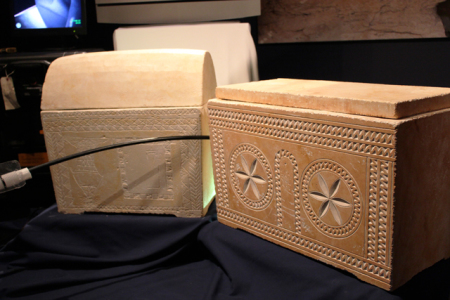Nazareth Inscription study questions link to Jesus’ tomb; not everyone agrees

A study by Oklahoma University and Harvard University has challenged the view of some scholars that the ancient marble tablet known as the Nazareth Inscription had been installed in the region in response to the empty tomb of Jesus, as well as the claim by some others that it indicates that His disciples stole His body from the tomb.
“The Nazareth Inscription has no connection with Jesus Christ or early Christianity,” the researchers wrote in the Journal of Archaeological Science: Reports, according to The Sunday Times.
The researchers claim that the marble is from the Greek island of Kos and the inscription was ordered by Caesar Augustus, decades before Christ, in response to an event described in an ancient poem in which the people of Kos broke into the tomb of the tyrant-ruler in the 30s BC, Nikias, and desecrated his corpse, according to Associates for Biblical Research.
The study suggests that Wilhelm Froehner, the man who purchased the Nazareth Inscription and died leaving a note saying that it was “sent from Nazareth,” was misled about the provenance of the stone in an effort to get more money for the artifact.
The Inscription, kept in the National Library of France in Paris, carries an edict of an unnamed Roman emperor saying no one is allowed to open tombs and the act is punishable by death.
However, in an academic paper on the Nazareth Inscription, Dr. Clyde Billington argues that there are six features in the marble which do not fit a non-Jewish, gentile context.
“First, there is no reference to bodies being dug out of the ground, only of their being ‘extracted’ from tombs and graves,” Billington writes. “Second, there is no reference to human ashes being scattered or to the urns of cremated individuals being stolen or destroyed. Third, there is no reference made to coffins, and most Roman inhumation burials of dead bodies were in wood or lead coffins.”
He continues, “Fourth, … there is an assumption of the existence of family tombs, and the gentiles in the Roman Empire did not have family tombs. Fifth, there is no reference to cemeteries, in which almost all Greco-Roman burials were made. And six, ‘sepulcher-sealing stones’ … were not used for inhumation burials by gentiles in the Roman Empire. In other words … the Nazareth Inscription fits very well within a Jewish family tomb context, but it does not fit at all within a gentile Greek or Roman context.”
Writing for Christian Today, the Rev. Dr. Pieter Lalleman, a tutor in Biblical Studies at Spurgeon’s College, asks, “Who discovered the inscription? Why was it sent to Froehner? And was it discovered in Nazareth or merely sent from there?” He points out that Nazareth was a market for ancient objects.
Lalleman adds, “The latest research may have established that the marble used for the inscription stems from Kos, but that does not decide where the text was written or what it was about … One thing is certain: we can’t use this enigmatic edict as ‘evidence” for the resurrection. Having said that, some connection cannot be ruled out either.”





















